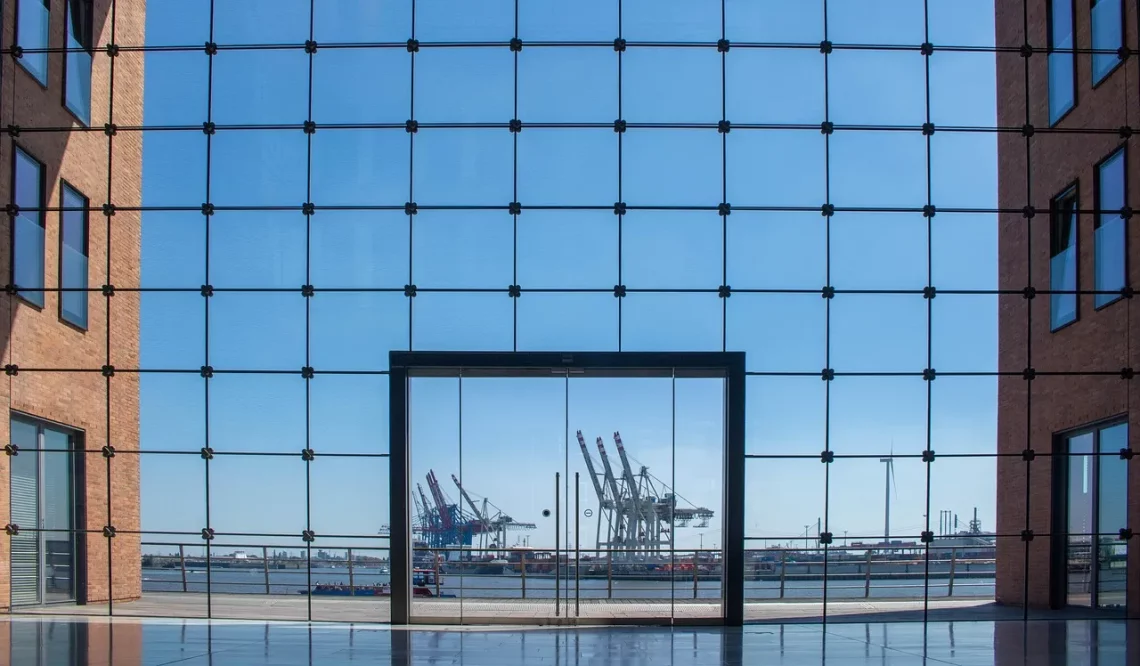
Exploring the Architectural Significance of the Thorp Building
The Thorp Building stands as a testament to architectural innovation, representing a significant chapter in the evolution of urban design. Nestled within a vibrant cityscape, this structure embodies not just the aesthetic trends of its time, but also the cultural and historical narratives that shaped its existence. The building’s intricate details and unique design elements invite admiration, sparking conversations about the role of architecture in reflecting societal values and aspirations.
As one gazes upon the Thorp Building, it becomes evident that architecture is more than mere construction; it is an expression of identity and a medium through which communities articulate their dreams and challenges. This landmark serves as a focal point for understanding how architectural movements can influence urban development and social interaction. The Thorp Building’s significance extends beyond its physical presence, as it encapsulates the essence of a community’s heritage, aspirations, and resilience.
As we delve deeper into the architectural merits of the Thorp Building, we uncover layers of meaning and intent, revealing how this structure has become a symbol of both historical prominence and modern relevance. The exploration of its design philosophy, materiality, and historical context allows us to appreciate the complexities that underline its importance in the architectural discourse.
Architectural Style and Design Philosophy
The Thorp Building is a remarkable example of architectural style that showcases a blend of various design philosophies. Its façades exhibit a harmonious fusion of traditional and contemporary elements, reflecting the evolution of architectural thought over time. This building incorporates features from several stylistic movements, including Art Deco and Modernism, which converge to create a visually striking and functionally efficient structure.
One of the key characteristics of the Thorp Building is its use of geometric shapes and clean lines, which are hallmarks of Modernist architecture. These elements not only enhance the aesthetic appeal but also contribute to the building’s overall functionality. The thoughtful arrangement of windows and open spaces allows natural light to permeate the interiors, fostering an environment that is both welcoming and conducive to productivity.
In contrast, the building’s decorative details pay homage to its historical roots. Intricate cornices, ornamental motifs, and carefully crafted entrances serve as reminders of the craftsmanship that defined earlier architectural practices. This interplay between modernity and tradition creates a narrative that speaks to the dynamic nature of architecture, illustrating how buildings can evolve while still honoring their legacies.
Furthermore, the Thorp Building’s design philosophy reflects a commitment to sustainability and community engagement. The incorporation of eco-friendly materials and energy-efficient systems demonstrates an awareness of contemporary environmental challenges. This proactive approach not only enhances the building’s performance but also positions it as a forward-thinking landmark that resonates with the values of today’s society.
In essence, the architectural style and design philosophy of the Thorp Building encapsulate a rich tapestry of historical influences and modern sensibilities. It serves as a model for future developments, illustrating how thoughtful design can create spaces that are both beautiful and sustainable.
Historical Context and Significance
Understanding the historical context of the Thorp Building is essential to appreciating its significance within the urban landscape. The building was conceived during a period of rapid growth and transformation, reflecting the aspirations and challenges of its time. As cities expanded and populations surged, architecture became a powerful tool for expressing civic pride and social ambition.
The Thorp Building emerged as a response to the need for functional yet aesthetically pleasing structures that could accommodate the demands of a burgeoning society. Its construction marked a pivotal moment in the community’s development, symbolizing progress and resilience in the face of change. This historical backdrop provides insight into the building’s role as a catalyst for social interaction, serving as a gathering place for residents and visitors alike.
Moreover, the building’s architectural significance is intertwined with key events and figures that shaped the local narrative. Over the years, it has hosted various cultural and civic activities, becoming a hub for community engagement. This multifaceted role enhances the building’s importance, as it not only represents architectural prowess but also embodies the spirit of the community it serves.
As urban centers continue to evolve, the Thorp Building stands as a reminder of the historical threads that connect past, present, and future. Its preservation and continued use are vital for maintaining the cultural heritage of the area, allowing new generations to engage with the stories that define their community.
In conclusion, the historical context and significance of the Thorp Building underscore its role as a landmark that transcends mere architectural beauty. It serves as a living testament to the values, aspirations, and resilience of the community, fostering a sense of identity and belonging.
Materials and Construction Techniques
The materials and construction techniques employed in the Thorp Building are integral to its architectural identity. The choice of materials not only affects the visual aesthetics of the structure but also influences its durability and sustainability. The building showcases a careful selection of both traditional and modern materials, which work together to create a cohesive and resilient design.
The exterior of the Thorp Building features a combination of brick, stone, and glass, each chosen for its specific properties and visual appeal. The use of brick pays homage to historical construction practices, while the incorporation of glass allows for transparency and light, aligning with modern architectural trends. This juxtaposition reflects a conscious effort to blend different eras and styles, creating a dialogue between the old and the new.
In addition to the aesthetic considerations, the construction techniques utilized in the Thorp Building are noteworthy. The use of advanced engineering methods has enabled the structure to stand the test of time, ensuring its longevity in an ever-evolving urban environment. Techniques such as reinforced concrete and precision masonry contribute to the building’s structural integrity, allowing it to withstand various environmental stresses.
The Thorp Building also exemplifies the principles of sustainable construction. The integration of energy-efficient systems and eco-friendly materials demonstrates a commitment to reducing the ecological footprint of the building. This forward-thinking approach aligns with contemporary architectural practices that prioritize sustainability and environmental responsibility.
Furthermore, the craftsmanship evident in the building’s details reflects a dedication to quality and artistry. From the ornate moldings to the carefully designed entrances, every aspect of the Thorp Building speaks to the skill and vision of its creators. This attention to detail enhances the overall experience of the building, inviting admiration from all who encounter it.
In summary, the materials and construction techniques employed in the Thorp Building play a crucial role in defining its architectural character. The thoughtful selection of materials and the application of innovative construction methods come together to create a structure that is not only visually stunning but also sustainable and resilient.
Community Impact and Future Prospects
The Thorp Building has had a profound impact on the community, serving as a focal point for social interaction, cultural expression, and economic activity. Its presence has contributed to the vibrancy of the surrounding area, attracting visitors and fostering a sense of pride among residents. The building’s role as a community hub underscores the importance of architecture in shaping social dynamics and enhancing urban life.
As a venue for various events and activities, the Thorp Building has facilitated connections among community members, fostering a spirit of collaboration and engagement. This aspect of its function is vital in today’s fast-paced world, where physical spaces can serve as catalysts for meaningful interactions. The building’s ability to adapt to the changing needs of the community reflects its relevance and importance in the urban fabric.
Looking towards the future, the Thorp Building faces both challenges and opportunities. As urban development continues to evolve, the need for preservation and innovation becomes paramount. Balancing the building’s historical significance with contemporary demands will be essential in ensuring its continued relevance. Efforts to enhance accessibility, incorporate modern amenities, and promote sustainability will play a crucial role in this process.
Moreover, the Thorp Building can serve as a model for future architectural projects, illustrating how historical structures can be integrated into modern urban landscapes. By embracing adaptive reuse and sustainable practices, architects and developers can create spaces that honor the past while meeting the needs of the present and future.
In conclusion, the community impact and future prospects of the Thorp Building highlight its significance as more than just an architectural marvel. It stands as a vital component of the urban landscape, fostering connections, promoting cultural exchange, and embodying the aspirations of the community it serves. The ongoing dialogue between history and modernity will ensure that the Thorp Building remains a cherished landmark for generations to come.




